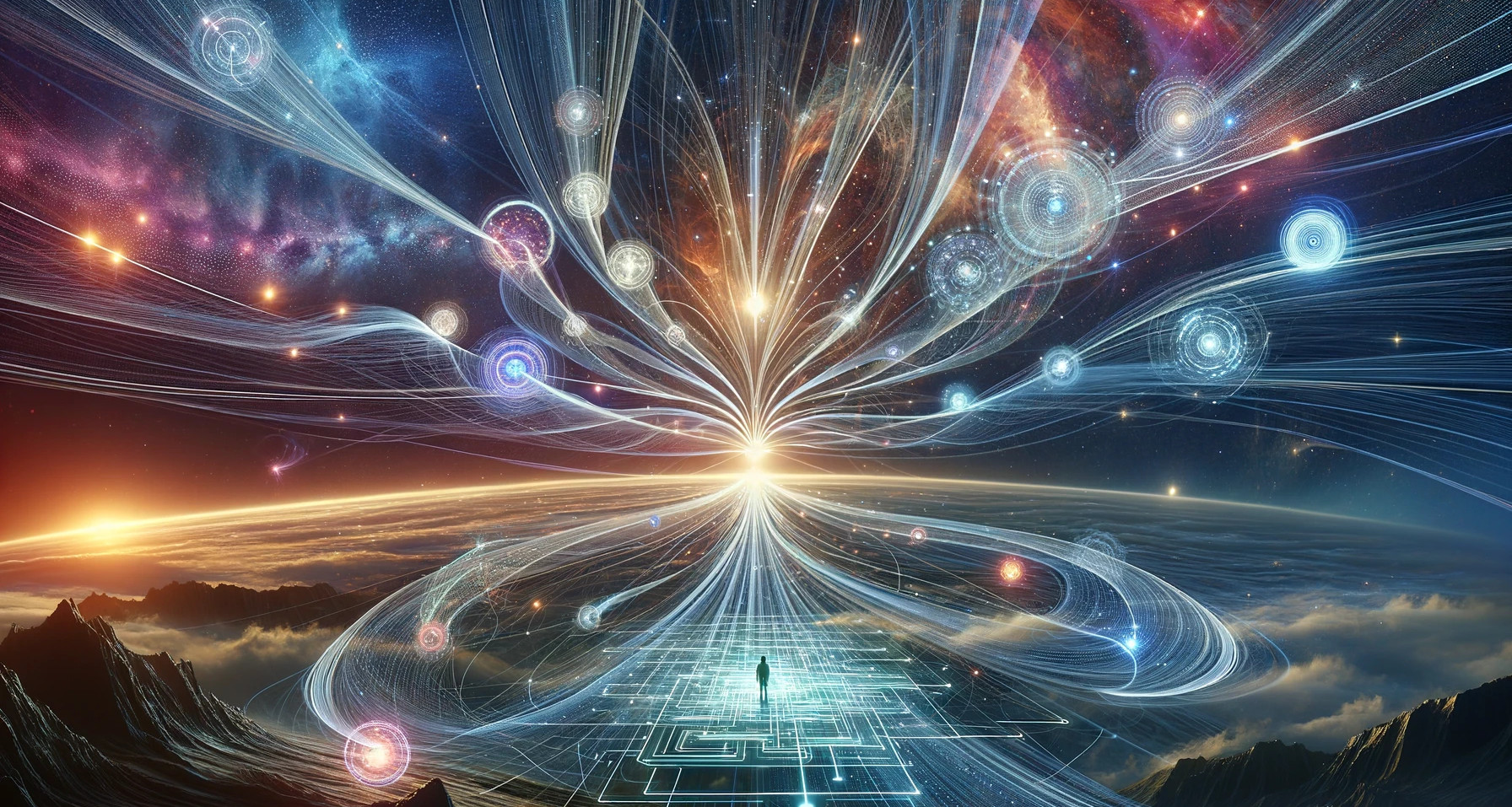Timing and destiny are often perceived as intertwined concepts in the sense that the timing of certain events in one’s life can seem preordained or aligned with one’s destiny. Destiny, understood as a predetermined set of outcomes or the path one is meant to follow, often unfolds in ways that feel serendipitous or inexplicably well-timed. The moments that define our lives, chance meetings, opportunities, and even misfortunes, can appear as if orchestrated by a larger force, suggesting that timing is not merely coincidental but a pivotal element in the realisation of our destinies. This interlinkage posits that the universe operates on a timeline that, while mysterious and unfathomable, aligns perfectly with where we are meant to be and what is meant to happen to us. Thus, the concept of ‘right time, right place’ isn’t just about luck; it’s about the alignment of life’s timing with the deeper, often unseen, currents of destiny.
Timelines
The concept of moving between timelines, within the context of destiny and timing, is a fascinating exploration of how different choices and events can pivot us onto alternate paths, each representing a distinct potential reality. This idea suggests that at any given moment, there are multiple futures available to us, and our decisions, consciously or unconsciously made, navigate us through these potential timelines. Moving between them could be as simple as making a choice that diverges from our usual patterns or as complex as experiencing life-altering events that shift our perception and, consequently, our trajectory. These transitions between timelines can often feel like significant turning points or crossroads, where the essence of our destiny unfolds in new directions. The agility to move between timelines, then, speaks to the fluid nature of our destinies, shaped by the interplay of choice, chance, and timing. It embodies the potential for transformation and the power of agency we hold in crafting our life’s journey amidst the vast possibilities that destiny may offer.
The fluid destiny
The idea that we can shift between timelines implies that destiny is not a fixed, unchangeable endpoint, but rather a fluid series of potential outcomes shaped by our actions and decisions. This perspective challenges traditional notions of fate as predetermined, suggesting instead that our lives are composed of myriad possible futures, each contingent on the paths we choose to take. It underscores the significance of personal agency and the transformative power of decision-making in determining our destinies. In this view, destiny becomes a tapestry of possibilities rather than a single, immutable course, highlighting the dynamic interplay between choice and chance. Our ability to navigate and transition across different timelines, effectively selecting from diverse potential destinies, reveals that the future is malleable, crafted both by the external forces of timing and the internal forces of intention and action. Thus, rather than being merely passengers on a predestined journey, we are co-creators of our destiny, capable of influencing its direction and outcome through the choices we make.
A learned skill
The concept of “jumping timelines,” or the ability to shift one’s trajectory towards different potential futures through deliberate choices and mindset changes, can be likened to mental and emotional gymnastics. It requires a sophisticated set of skills including self-awareness, adaptability, resilience, and the capacity to envision alternative possibilities. Just as physical gymnastics involves training the body to perform complex movements with precision and grace, navigating timelines demands training the mind and emotions to handle life’s complexities with flexibility and strength. This skill set, focusing on the mastery of one’s thoughts, emotions, and responses to external circumstances, could indeed be cultivated through education. Imagine a curriculum designed to enhance students’ abilities to perceive various future pathways, make conscious choices, and adapt to changes with resilience, essentially teaching them to navigate life’s uncertainties with confidence. Such training could empower individuals to actively shape their destinies, making the concept of “jumping timelines” not a metaphysical mystery, but a practical skill for personal development and fulfilment.
Beyond the appearance
At first glance, it might seem as though our destiny is a fixed pathway, predetermined and unalterable, as if the script of our lives is already written. However, upon closer examination, it becomes evident that we are continuously shaping our destiny with our minds and emotions, through the decisions we make and the perspectives we adopt. This dynamic process reflects the power of our thoughts and feelings in steering the course of our lives, influencing the timelines we traverse. Our reactions to experiences, the mindset with which we approach challenges, and the visions we hold for our future, all play pivotal roles in crafting the narrative of our destiny. Each moment offers a choice, and with each choice, there’s a potential to shift directions, to leap onto a new path that better aligns with our aspirations and dreams. Thus, rather than being mere spectators to a predestined fate, we are active participants, engaged in a constant process of creation and re-creation, using our mental and emotional faculties to navigate the vast sea of possibilities that life offers. The realisation that our destiny is not fixed, but rather a malleable outcome shaped by our inner landscape, underscores the profound agency we possess in sculpting the contours of our lives.
